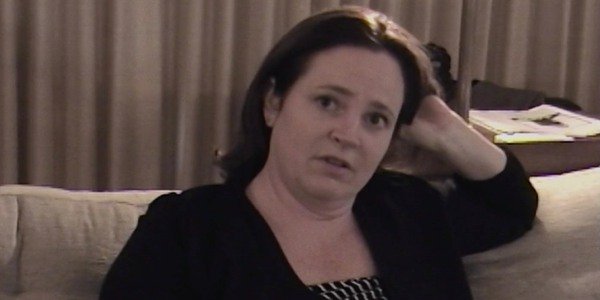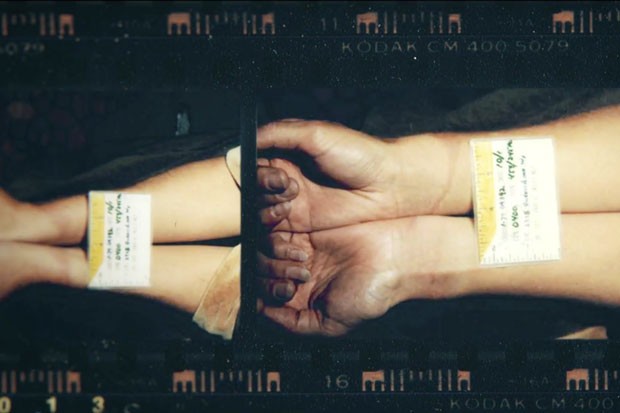This week’s episode took a solemn turn as Michelle’s story returned to the main narrative bringing darkness and depression along for the ride. It becomes very clear from this episode how much she was consumed by her determination to catch the EAR and how it began to have a detrimental effect on her mental health and her relationships. In a poignant moment of the documentary, Michelle is seen in a home video we have seen throughout the series so far, and she is interrupted by her diaper-wearing daughter Alice, who just wants a cuddle with her mommy, while talking about the case. Michelle pauses what she is saying and is deliberately trying not to talk about it in front of Alice and when Alice is gone, she carries on. While Alice may not have heard her mother talk about the case, she would be directly impacted by her obsession. As the last line of her LA magazine article would read; “‘He can’t hurt me,’ I say, not realizing that in every minute spent hunting him and not cuddling my daughter, he already has.”
Following on from last week’s lead of the cufflinks, we reach an underwhelming conclusion. The cufflinks are a dead end, but the one good thing to come from this was a new coalition with detective Paul Holes, who, initially was very wary of Michelle as a reporter and journalist, but came to trust her upon discovering she knew about as much about the case as he did. In his words, ‘she really knew her stuff’. Episode three sees the EAR take a turn, geographically and criminally. He has moved south towards Goleta and has started to murder people and within only a few short months, he would move from serial rapist to serial killer. He is still prying on couples in wealthy neighborhoods, still making bone-chilling phone calls of breathy, demonic threats and still desperate to make people fear him. The episode focuses on five murders in a cluster of neighborhoods north of Santa Barbara and what was most fascinating about this episode was that the cases attributed to the EAR in the Sacramento region of California and these murders were not immediately linked to each other. Larry Crompton desperately tried telling Santa Barbara detectives that the modus operandi of their murderer, who they dubbed the Original Night Stalker, was exactly the same as the East Area Rapist but until DNA testing they weren’t able to determine indefinitely that they were the same person. The truth of the matter was that Santa Barbara was an affluent area, occupied by the rich and famous and the news of a serial killer and rapist would drive real estate prices down and the neighborhood would suffer, so it was in the best interests of the area to keep things fairly hush-hush. All well and good until innocent people are bludgeoned to death in their beds. The very nature of these murders, in their violent and rage-filled manifestations, indicated a change in the EAR, a deep hatred for his victims, a desperate need for release.
Alongside the case developments, we delve deeper into Michelle’s personal life. Michelle was becoming entirely consumed by her work and her article for LA magazine catapulted her into the attention of the world and book publishers. She was swiftly signed to a book deal to release a book within eighteen months. The pressure of writing this took a huge toll on her and she repeatedly mentions her reliance on Ambien and other prescription medications for helping her get through it, a tragic reminder that her death would come at the hands of a mistaken dosage in only a few months time. The episode focusses on Michelle’s childhood and relationship with her mother. When she was born, she was significantly younger than her siblings and she developed her own independence and her own voice at a very young age. Her relationship with her mother seemed very complicated but it was her father who had the biggest impact on her. Their kinship was unparalleled and his death hit her very hard at a time when her mental health was already vulnerable. She was asked by her publishers to have the first draft of the book done by December 2015 and the episode ends on Thanksgiving 2015, only a couple of weeks before its due. The documentary shows us texts exchanged between Michelle and Patton as well as playing Patton’s voicemails to Michelle during this time. These show how much pressure she felt and how supportive her family were of everything she was doing. They knew how much this all meant to her and what she was capable of and they did all they can to enable her to achieve what she could. Its remarkable, to see that kind of strength in a partnership of people. Michelle would die from an accidental overdose in only four months’ time. The home video footage shows a joyful, happy mother celebrating her daughter’s birthday, lovingly doting on her child. But it also shows the torment she feels inside, just from looking into Michelle’s eyes and hearing her talk, you can see that there is a lot of darkness bubbling underneath. The documentary highlights this brilliantly by showing you the two sides of Michelle simultaneously. She spends her days looking after her daughter and being a mother but she spends her nights reading gruesome details of murders and obsessing over a 40-year-old cold case.
Readers of the book will note that we are reaching the end of the EAR/ONS era of raping and killing innocent Californians so the rest of the series must pull focus on to what happened next and how Michelle’s work lead to the arrest and incarceration of one of the most notorious serial killers in existence.
Here is a link to the next preview.


